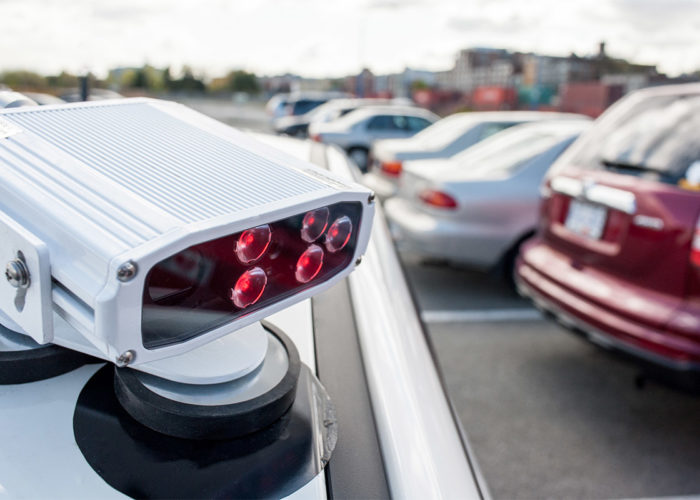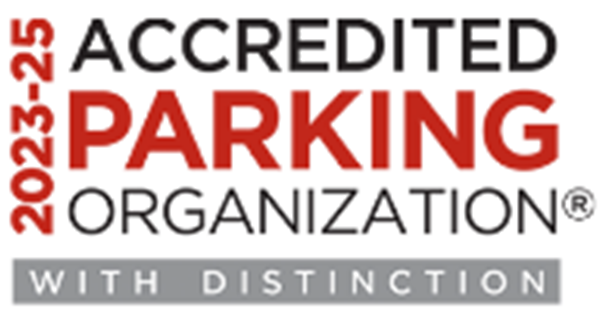What is Mobile LPR Technology?
Mobile license plate recognition (LPR) is one of the most effective parking enforcement methods available today.
Using a series of cameras, infrared lights, optical character recognition software, and license plate databases, mobile LPR allows patrollers to monitor parking zones at maximum efficiency without having to make multiples stops or exit their vehicle.
How Does Mobile LPR Technology Work?
1. Capture
LPR cameras mounted on a parking support vehicle detect all license plates in their field of view, automatically capturing and combining multiple images into single, accurate reads.
2. Compare
The mobile LPR system compares license plate reads against approved vehicle lists (e.g., permit holders) and restricted vehicle lists (e.g., vehicles registered as stolen).
3. React
Instant notifications are sent to the parking support vehicle’s mounted laptop with priority-based sound and color alerts, prompting the patrollers to act.
4. Report
The system records and stores plate numbers, dates, times, GPS coordinates, citation types, and actions taken for future reports, data mining, and trends analysis.

Applying Mobile LPR Technology
With this single system, facility project managers and municipalities can monitor their parking assets in multiple ways simultaneously, including:
1. Monitoring Parking Permit Usage
Mobile LPR streamlines on-street and off-street parking permit monitoring, as all that’s needed is an electronic list of permitted license plates. This approach nullifies the need for wasteful paper, plastic, and sticker permits and, consequently, the risk of fraudulent permit usage. The simplified workflow also eradicates administrative headaches associated with managing a physical permitting program and reduces the dedicated staffing required with more laborious patrolling techniques.
Even time-sensitive permit programs, such as those employing two-hour on-street maximums or those that are valid only after 5:00 p.m., become much easier to manage.
2. Identifying Scofflaws
One of LPR’s principal uses is to locate “scofflaws,” i.e., vehicles associated with multiple unpaid parking or traffic citations. Typically, this usage runs in tandem with a booting or towing program that immobilizes flagged vehicles, encouraging the swift resolution of outstanding debt.
The efficacy of using this system is two-fold: the presence of parking support vehicles fitted with LPR technology inspires customers to comply with parking policies while the accuracy of LPR itself typically doubles — even triples — the amount of successfully resolved citations.

3. Monitoring Hot-Lists
LPR systems can compare license plates to a database housing any vehicles of interest. This versatility can extend to, for example, monitoring visitor parking in restricted areas of a garage, campus, or hospital. It can also be used to identify vehicles of interest to local law enforcement, such as stolen vehicles or those suspected of being involved in a crime. LPR technology can even assist with the safe resolution of Amber Alerts.
4. Collecting Trends Data
Mobile LPR systems can capture vital data about the health of your parking infrastructure, including occupancy by time, day, and length of stay. This data can then be applied to help optimize your staffing schedule and maximize the profitability of your rate structure.
Where Can I Get Mobile LPR Technology?
Municipal Citation Solutions (MCS), an Impark subsidiary, designs LPR solutions for clients across North America to complement their parking management programs.
Employing only the most advanced handheld, mobile, and fixed LPR technology options available coupled with advanced data analytics, each solution we create and deploy is shaped by the distinct needs of our clients and our own extensive parking and enforcement experience.
Find out if an LPR solution is right for you. Contact a member of the MCS team today.
Jeff Van Allen is vice president of Municipal Citation Solutions, an Impark company. Email him at jvanallen@municipalcitationsolutions.com.


